Although the last day of any experience is often bittersweet, our potluck dessert table made…
Daily Manaʻo for Cohort Kumukahi May 2024 – Tuesday
Tuesday, May 14, 2024
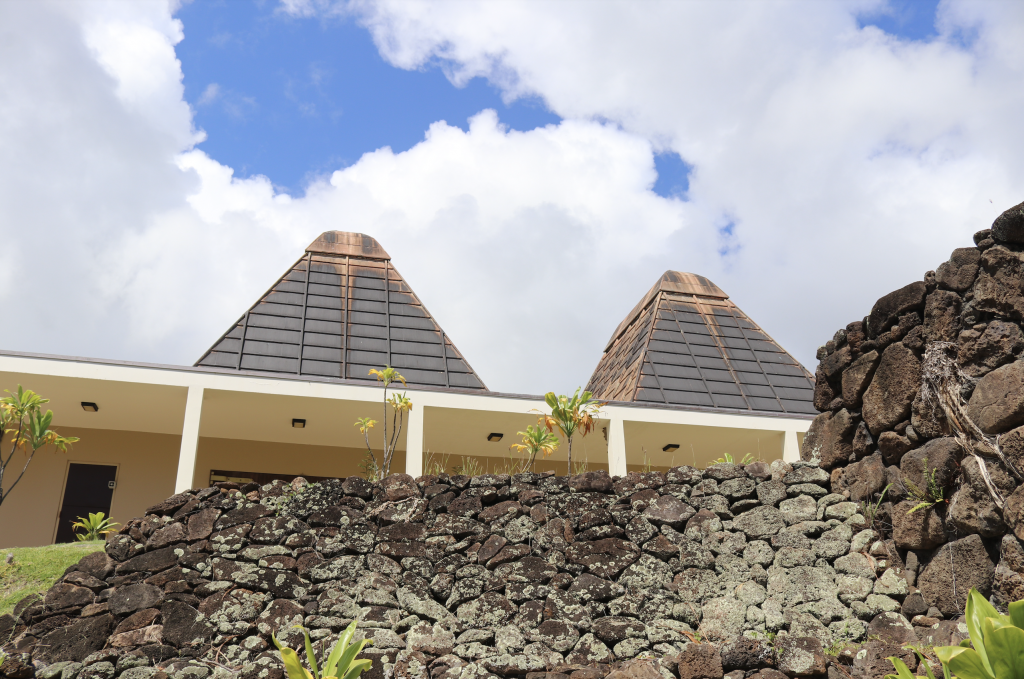
Although the morning rains may have flooded some (if not most) of our commutes to campus for our day at Kamakakūokalani Center for Hawaiian Studies, the skies cleared by late morning for our day at the loʻi. Since we were introducing concepts grounded in Hawaiʻi-based understandings of geography, naturally we had to ask which moku everyone is from or lives in. Although everyone has been living in each of our respective moku for many different lengths of time, we each still proudly represent the places in which we reside. As for myself, I always love a good opportunity to represent being from ʻEwa, and I always appreciate when I am able to share my aloha for ʻāina with others. “Welina Mānoa” is a beautiful composition by Kumu Keawe Lopes, director of Kawaihuelani Center for Hawaiian Language that contains important names and details of Mānoa, so learning more about the geographic features of the ʻāina is another opportunity to build deeper connections with Mānoa. As we learned “Welina Mānoa” within the ʻili ʻāina of Kānewai, we had the opportunity of being surrounded by the many sounds and voices of the valley.
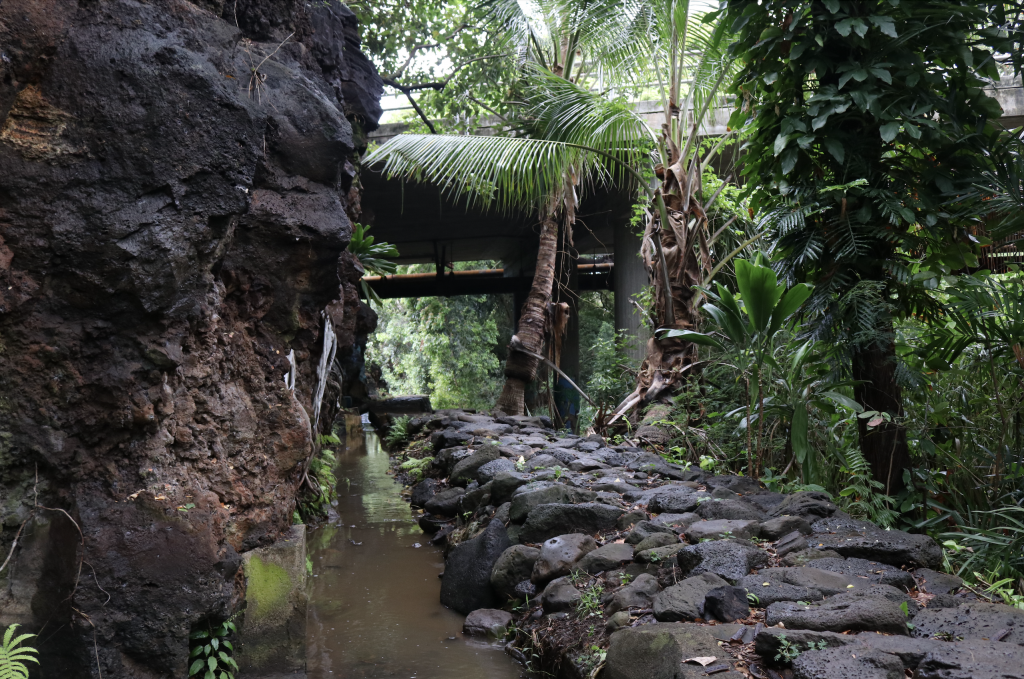
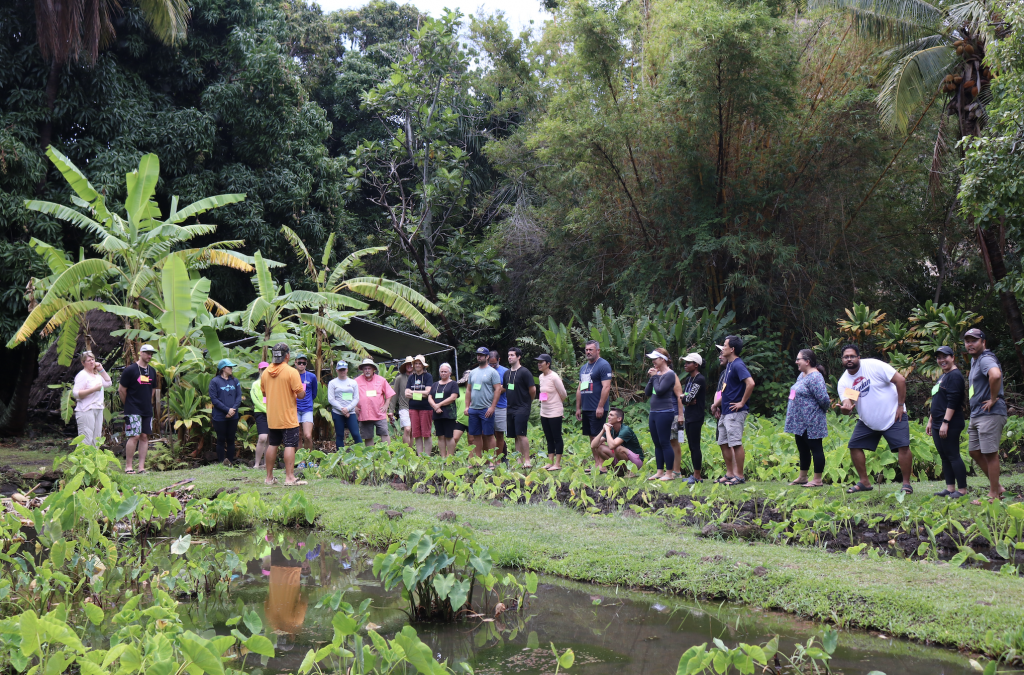
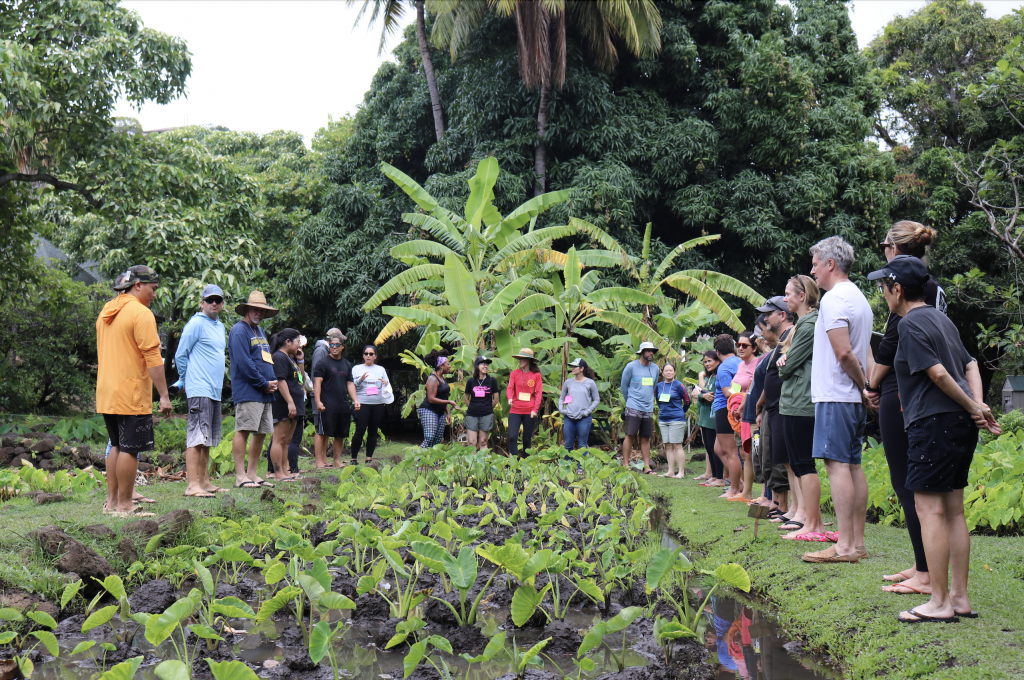
Our afternoon at Ka Papa Loʻi ʻo Kānewai was beautiful, and we could hardly tell from the passing clouds above that the rain had been so unrelenting in the morning. During our time visiting the loʻi, we heard moʻolelo about Kāne and Kanaloa venturing throughout Waikīkī seeking fresh groundwater sources and underground springs. We also heard more stories about the importance of having fresh water and the political implications of not having access to running water. However, as we felt the cold waters moving through the ʻauwai (irrigated channels) and into the loʻi kalo, the fresh water brought beauty in the form of a pua kalo—a flower of the Kāī Kea variety. Excitedly, I couldn’t help but tell everyone within the vicinity about the pua, especially my coworker Nick, since we both share aloha for our same favorite variety of kalo. This was my first time seeing a flower of the Kāī Kea, and it was particularly special to share this experience because our March offering of Cohort Kumukahi was the first time that I introduced Nick to the Kāī of Kānewai, and we had spent time remounding (puʻepuʻe) in the very same loʻi named Puʻepuʻeʻīlio. Yet another example of how our pilina with ʻāina helps to deepen our pilina with other people!
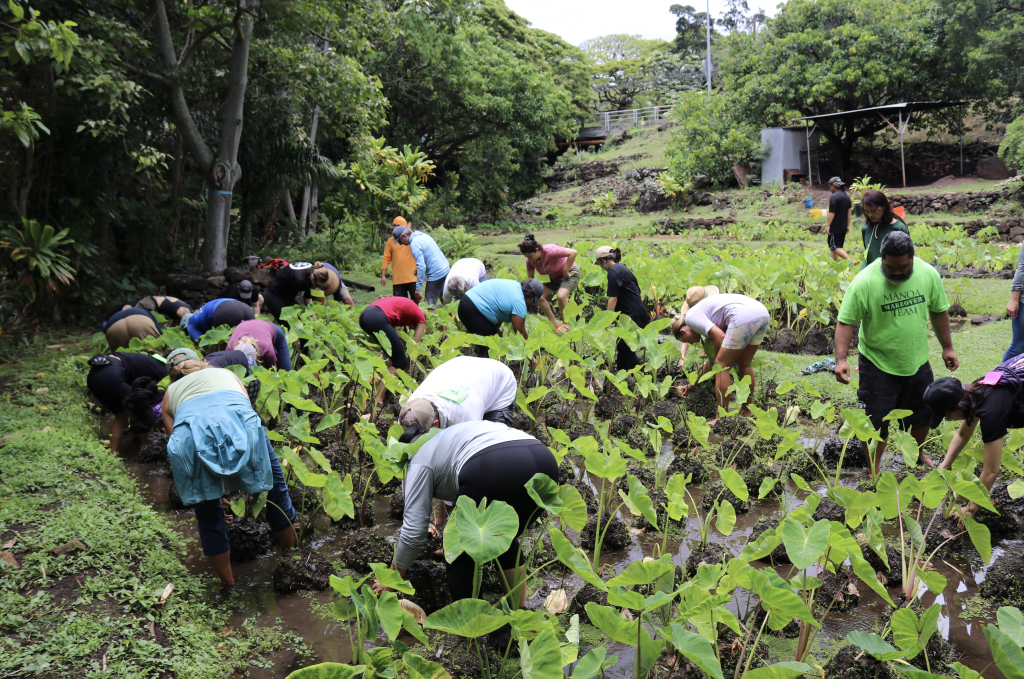
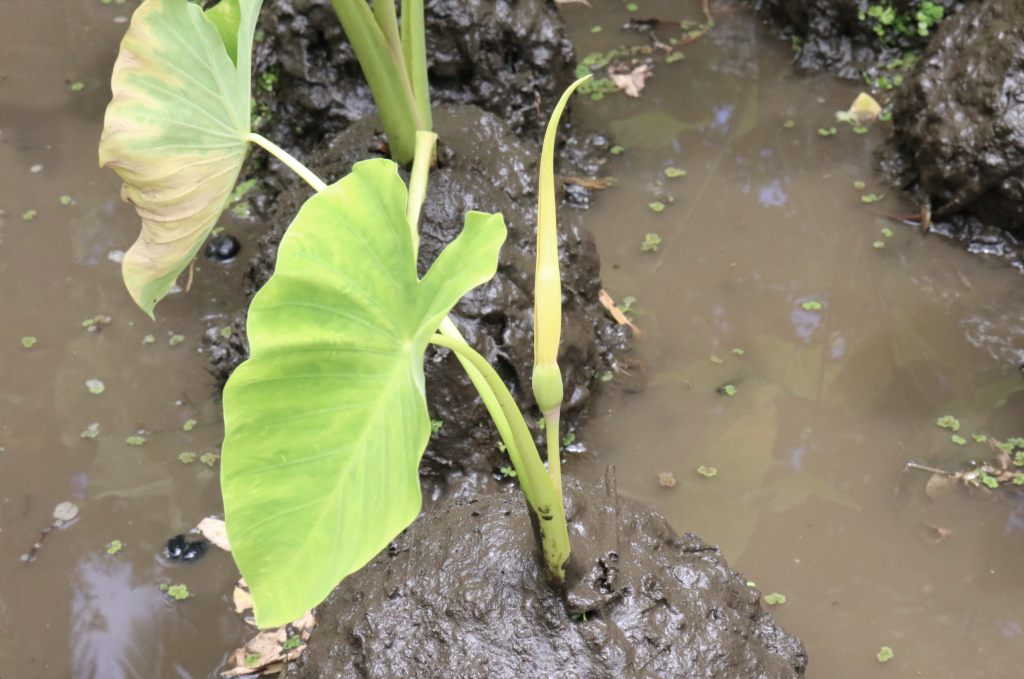
Following another successful lunch that consisted of a beautiful spread of our salad potluck, we then had an activity that we call “Speed Dating,” where cohort members paired themselves up and had the opportunity to take turns speaking and listening in response to some of our prompts. The conversations were centered around learning about concepts such as moʻokūʻauhau and kuleana, and we then regathered together to discuss as a large group. Some of the folks shared about their experiences coming into their own understandings of these concepts. For example, one person reflected that listening to others share such expansive answers about the concept of moʻokūʻauhau helped them to better understand moʻokūʻauhau not just as ancestral genealogies but also the responsibilities of being in relationship with others. Another cohort member later shared that they had a realization of how interconnected and interwoven the concept of kuleana is to moʻokūʻauhau and how they were reminded of beautiful weaving patterns that are the result of a consistent and continuous process that is very embodied in connection to ʻāina and to others.
Related Posts
Group photo of our October Cohort Kumukahi participants in Hālau o Haumea. Mahalo e Aunty…
Friday, August 16, 2024 To close our week, we invited everyone to leave a message…
